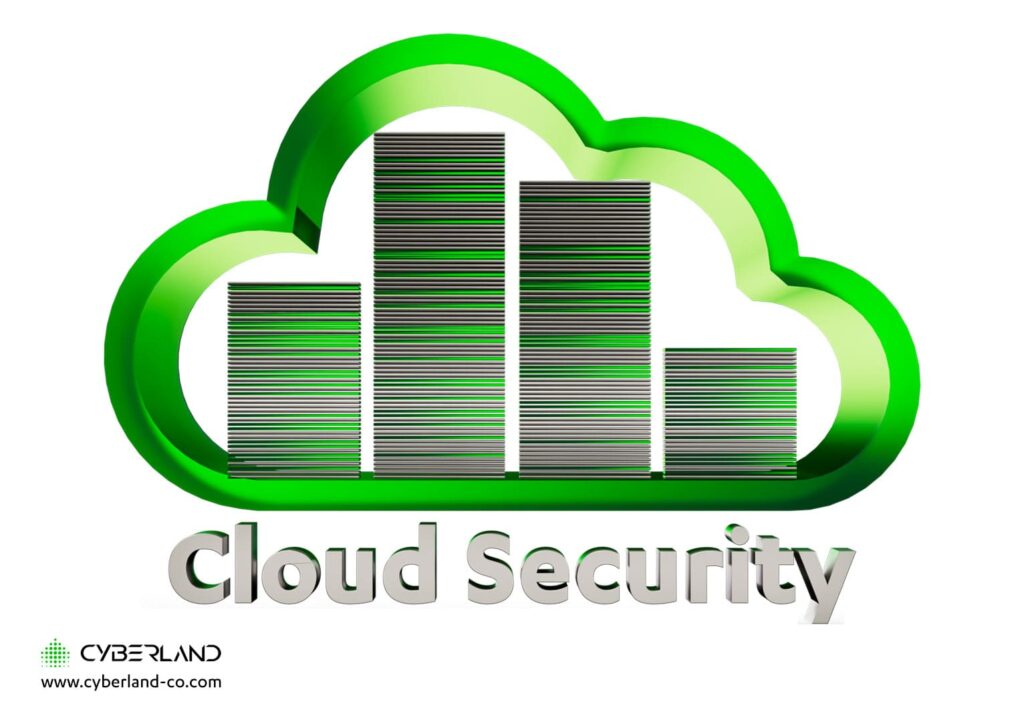
In an increasingly interconnected world, where businesses and individuals alike rely on cloud computing for data storage and processing, ensuring robust cloud security is paramount. As organizations embrace the agility, scalability, and cost-effectiveness of cloud services, they must also address the potential risks associated with storing sensitive data in virtual environments. Here we aim to provide a comprehensive overview of cloud security, highlighting key considerations and best practices to safeguard your digital assets.
What is Cloud Security?
Cloud security refers to the set of measures and practices designed to protect data, applications, and infrastructure within cloud computing environments. Cloud security focuses on safeguarding sensitive information, ensuring privacy, maintaining data integrity, and enabling reliable access to cloud resources.
A combination of technologies, policies, controls, and procedures is employed in cloud security to minimize the risks involved in storing data and operating applications within cloud computing environments. It encompasses several key aspects, which include:
Data Protection
Cloud security aims to protect data at rest and in transit. This includes encryption techniques, access controls, and secure storage to prevent unauthorized access, data breaches, and data loss.
Identity and Access Management (IAM)
By implementing authentication mechanisms, multi-factor authentication, access controls, and role-based access management, cloud security guarantees that only authorized individuals or systems can gain access to cloud resources. This comprehensive approach significantly reduces the likelihood of unauthorized access and mitigates associated risks.
Network Security
To safeguard cloud infrastructure and isolate sensitive data, cloud security tackles network vulnerabilities through the implementation of protective measures. These measures include firewalls, intrusion detection and prevention systems, virtual private networks (VPNs), and network segmentation. By deploying these technologies, cloud security ensures the protection of the underlying infrastructure and enhances the security posture by effectively mitigating network-related risks.
Application Security
Cloud security involves securing applications deployed in the cloud. This includes secure coding practices, regular vulnerability assessments, and penetration testing to identify and remediate potential vulnerabilities and protect against threats like cross-site scripting (XSS), injection attacks, and other application-layer vulnerabilities.
Compliance and Governance
To comply with industry regulations, standards, and internal policies, cloud security encompasses activities such as monitoring and auditing the cloud infrastructure, managing security configurations, and implementing controls. These measures are put in place to meet compliance requirements and ensure that the cloud environment adheres to the necessary regulations and standards. By actively monitoring and managing security configurations, cloud security helps organizations maintain a secure and compliant cloud environment while minimizing potential risks and vulnerabilities.
Incident Response and Recovery
An integral aspect of cloud security is the establishment of robust incident response plans and disaster recovery mechanisms. These proactive measures enable the swift detection, response, and recovery from security incidents or breaches. By having well-defined protocols and procedures in place, cloud security ensures that any potential security issues are addressed promptly, minimizing the impact on operations and allowing for a rapid restoration of services. These incident response and disaster recovery measures are crucial for maintaining the integrity and continuity of cloud-based systems and protecting against potential threats.
Cloud security is a shared responsibility between the cloud service provider (CSP) and the cloud user. While the CSP is responsible for securing the underlying infrastructure, the cloud user is responsible for securing their data, applications, and access controls within the cloud environment. The specific responsibilities can vary based on the cloud deployment model (public, private, hybrid) and the service model (Infrastructure as a Service, Platform as a Service, Software as a Service) being utilized.
Common Cloud Security Risks
Cloud computing offers numerous benefits, but it also presents certain risks and vulnerabilities that organizations must address to maintain a secure environment. Here are some common cloud security risks:
Data Breaches and Unauthorized Access
One of the primary concerns in cloud security is the risk of data breaches and unauthorized access. Inadequate security measures, weak access controls, compromised credentials, or vulnerabilities in cloud services can lead to unauthorized individuals gaining access to sensitive data. Such breaches can result in data loss, privacy violations, financial losses, and reputational damage for organizations.
Inadequate Identity and Access Management (IAM)
Effective identity and access management (IAM) is crucial in the cloud environment. Weak IAM practices, such as improper user provisioning, insufficient authentication mechanisms, or inadequate access controls, can lead to unauthorized users gaining access to critical resources. Organizations must implement robust IAM policies, including strong authentication methods, multi-factor authentication, and regular access reviews, to reduce the risk of unauthorized access and data breaches.
Insufficient Data Encryption
Data encryption is vital to protect sensitive information stored in the cloud. If data is not adequately encrypted, it becomes vulnerable to unauthorized access. Encryption helps ensure that even if data is intercepted or accessed without authorization, it remains unreadable and unusable to unauthorized individuals. Organizations must employ strong encryption methods, both in transit and at rest, to safeguard their data in the cloud.
Service Provider Vulnerabilities
Cloud service providers (CSPs) can also be subject to security vulnerabilities. Despite CSPs implementing stringent security measures, they can still be targeted by cybercriminals. If a CSP experiences a security breach, it can potentially impact multiple customers who rely on their services. Organizations must assess the security practices of their chosen CSPs, including their data center security, incident response plans, and overall track record, to minimize the risk of service provider vulnerabilities.
Lack of Security Awareness and Training
Human error and lack of security awareness among employees pose a significant risk to cloud security. Phishing attacks, social engineering, and unintentional data exposure can occur if individuals within an organization are not adequately trained to recognize and respond to potential security threats. Organizations should prioritize security awareness training programs to educate employees about best practices, potential risks, and the importance of maintaining a secure cloud environment.
Best Practices for Cloud Security
To minimize risks, safeguard sensitive data, and uphold a secure cloud computing environment, it is imperative to implement optimal practices for cloud security. The following are key considerations for best practices:
Strong Authentication and Access Controls
Implement strong authentication mechanisms, such as multi-factor authentication (MFA), to ensure that only authorized users can access cloud resources. Utilize strong passwords, enforce password policies, and regularly review and update access controls to prevent unauthorized access.
Robust Data Encryption and Key Management
Encrypt sensitive data both at rest and in transit using strong encryption algorithms. Implement proper key management practices to securely store and manage encryption keys. This helps safeguard data from unauthorized access, even if there is a breach or data interception.
Regular Data Backups and Disaster Recovery Planning
Establish a robust data backup strategy and disaster recovery plan to ensure business continuity in the event of data loss or system failure. Regularly backup critical data and test the restoration process to validate the effectiveness of the backup strategy.
Ongoing Monitoring and Intrusion Detection Systems
Implement monitoring and intrusion detection systems to proactively identify and respond to potential security threats. Monitor cloud infrastructure, network traffic, and user activities to detect any suspicious or anomalous behavior.
Compliance with Industry Standards and Regulations
Stay informed about relevant industry standards and regulations related to data security and privacy, such as the General Data Protection Regulation (GDPR) or the Payment Card Industry Data Security Standard (PCI DSS). Ensure compliance with these requirements to protect sensitive data and avoid legal and regulatory consequences.
Security Awareness Training for Employees
Educate employees about cloud security best practices and potential risks. Provide regular security awareness training sessions to raise awareness of phishing attacks, social engineering, and other common security threats. Encourage employees to adopt good security habits and report any suspicious activities promptly.
Regular Security Assessments and Audits
Perform regular security assessments, penetration testing, and vulnerability scanning to identify and address potential security weaknesses. Conduct internal audits or engage third-party auditors to evaluate and validate the effectiveness of security controls and processes.
Vendor Management and Due Diligence
If using cloud service providers, conduct thorough due diligence to assess their security practices and certifications. Review their security policies, incident response procedures, and service level agreements (SLAs). Ensure that the chosen providers align with your security requirements and have a strong reputation for maintaining a secure cloud environment.
Latest Developments in Cloud Security
Cloud security is a rapidly evolving field, driven by advancements in technology and the ever-changing threat landscape. Several emerging trends are shaping the future of cloud security:
Zero Trust Architecture
Zero Trust Architecture is gaining prominence in cloud security. It revolves around the principle of “never trust, always verify,” where users and devices are continuously authenticated and authorized, regardless of their location or network. This approach focuses on granular access controls, strict identity verification, and constant monitoring to mitigate the risk of unauthorized access.
Container and Serverless Security
As organizations increasingly adopt containerization and serverless computing, securing these environments becomes critical. Container and serverless security tools and practices are emerging to provide better visibility, isolation, and vulnerability management within these dynamic and scalable architectures.
Cloud-native Security
Cloud-native security solutions are designed specifically for cloud environments, leveraging the unique capabilities and features of cloud platforms. These solutions provide enhanced visibility, real-time threat detection, automated incident response, and compliance management tailored for cloud-native applications and infrastructure.
Machine Learning and AI-driven Security
Machine learning and artificial intelligence (AI) technologies are being harnessed to enhance cloud security capabilities. These technologies enable faster threat detection, behavioral analysis, anomaly detection, and predictive modeling to identify and respond to security incidents more effectively.
DevSecOps Integration
DevSecOps, the integration of security practices into the software development and operations lifecycle, is becoming an integral part of cloud security. DevSecOps emphasizes security automation, continuous monitoring, and collaboration between development, operations, and security teams to embed security into every stage of the software delivery pipeline.
Cloud Security Posture Management (CSPM)
CSPM solutions provide organizations with visibility into their cloud infrastructure’s security posture, helping identify misconfigurations, compliance violations, and potential vulnerabilities. These tools offer continuous monitoring, compliance assessment, and remediation guidance to maintain a robust security posture in the cloud.
Data Privacy and Compliance
With increasing data privacy regulations like GDPR and CCPA, there is a growing focus on cloud security solutions that ensure data protection, privacy controls, and compliance with regulatory requirements. Encryption, data anonymization techniques, and privacy-enhancing technologies are becoming essential components of cloud security strategies.
Multi-cloud Security
As organizations adopt multi-cloud environments, securing workloads and data across multiple cloud platforms becomes a priority. Multi-cloud security solutions provide centralized visibility, policy management, and consistent security controls across different cloud providers, ensuring a unified and cohesive security posture.
Cloud Security with Cyberland
Cyberland takes a comprehensive approach to cloud security and can assist you in assessing your current security posture, identifying potential vulnerabilities, and developing strategies to enhance your overall cloud security framework. We can provide insights into industry standards and compliance requirements, assist in selecting and implementing appropriate security solutions, and help you establish incident response plans and disaster recovery mechanisms.
With our deep understanding of cloud security, Cyberland can help you make informed decisions and ensure that your cloud environment is protected against unauthorized access, data breaches, and other potential threats. Whether you are a small business, a large enterprise, or an individual seeking to secure your cloud-based assets, Cyberland can offer the expertise and support you need.
To explore your options and gain valuable insights into cloud security practices, we encourage you to contact us today. Our team is ready to assist you and provide tailored recommendations based on your specific requirements and objectives.



